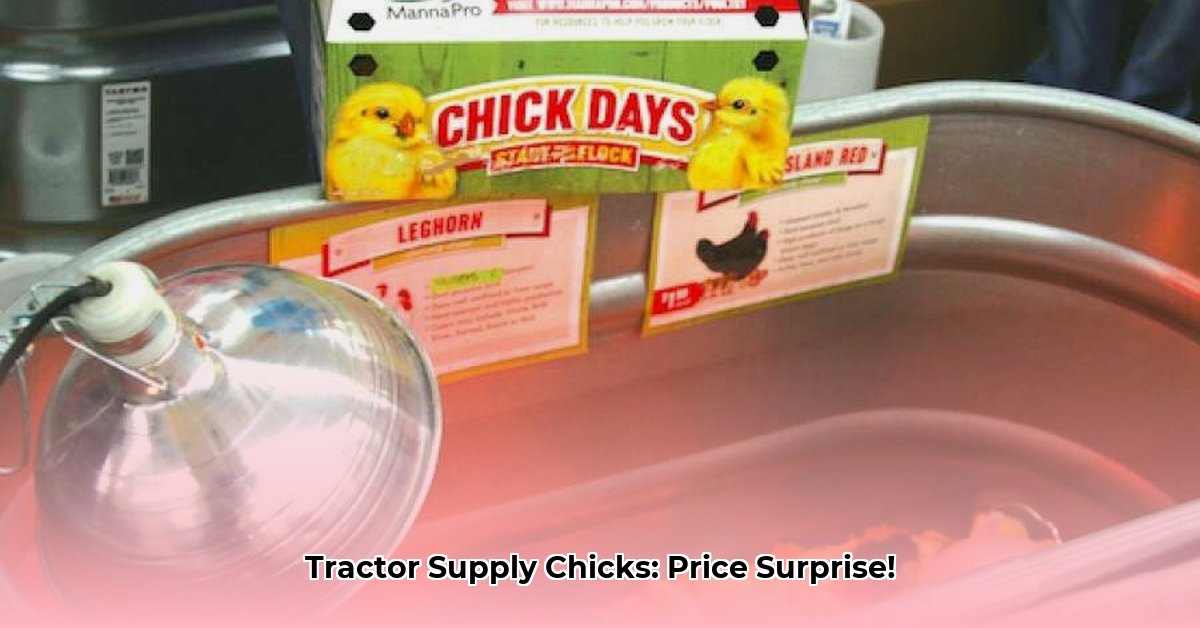
So, you're wondering how much chicks cost at Tractor Supply? That's a great question, but the answer isn't as simple as a price tag. The true cost of raising chickens extends far beyond the initial purchase. This guide delves into the complexities of sustainable poultry farming, providing context for your initial question and empowering you with the knowledge to make informed decisions. For similar price comparisons on other fowl, check out duckling prices.
More Than Just a Price Tag: Understanding Chick Costs and Sustainable Practices
The price of chicks at Tractor Supply (or any retailer) varies significantly. Breed, age, and source all influence the cost. A rare breed will typically command a higher price than a common one, much like car models; younger chicks are generally cheaper; and the source – be it a local farm or a large chain – impacts cost. Crucially, the method of raising the chicks directly affects price. Organic and free-range chicks will always cost more due to higher production costs associated with sustainable practices.
Raising Chickens Sustainably: It's About More Than Just Eggs
Sustainable poultry farming is a holistic approach that balances profitability with ethical animal care and environmental stewardship. It’s a delicate balance: using feed efficiently, managing waste responsibly, and minimizing environmental impact. While initial investment may be higher, the long-term benefits include healthier birds, reduced disease, and potentially higher-value products. This proactive approach contributes to a more robust and resilient farming operation.
Chicken Farming Models: Choosing the Right Path
Different farming models drastically alter both costs and sustainability.
Conventional Farming: Characterized by high-density housing, often in cages, this method prioritizes cost-efficiency and high output but typically compromises animal welfare and results in a higher environmental impact due to concentrated waste and potential overuse of antibiotics.
Cage-Free Farming: Provides chickens with more space than conventional systems, often leading to improved bird health and welfare. This increases initial investment costs, but the potential for reduced disease and vet bills can balance this.
Free-Range Farming: Allows chickens outdoor access, enhancing animal welfare. Costs increase slightly, with higher feed costs due to foraging and potentially lower egg counts, but the higher market value of free-range eggs can offset these costs.
Organic Farming: Adheres to rigorous standards, demanding outdoor access, organic feed, and high welfare practices. While initial and ongoing costs are the highest, the premium commanded by organic eggs or meat generally offers a strong return.
This variety in farming styles directly affects chick pricing. Organic chicks will be more expensive compared to conventionally raised chicks, with free-range chicks falling somewhere in between.
Your Action Plan for Sustainable Chicken Keeping
Successfully transitioning to sustainable chicken farming entails careful planning. These actionable steps will guide you:
Research Breeds: Thoroughly research breeds suitable for your climate, space, and goals (eggs or meat). Choosing the right breed is crucial for both productivity and sustainability.
Prioritize Sustainable Feed: Opt for high-quality, locally sourced feed to minimize transportation costs and environmental impact. Explore options like incorporating insect protein or recycled food waste.
Implement Effective Waste Management: Compost chicken manure to create a valuable fertilizer, reducing waste and benefiting the environment. Consider anaerobic digestion for enhanced sustainability.
Focus on Animal Welfare: Provide ample space, access to clean water, and predator protection. Happy, healthy birds are more productive and less prone to disease.
Seek Transparency: Select suppliers who are transparent about their farming practices and adhere to high ethical and environmental standards.
A Quick Cost Comparison (General Estimates)
| Farming Method | Initial Chick Cost | Feed Costs | Labor Costs | Environmental Impact | Potential Profit |
|---|---|---|---|---|---|
| Conventional | Low | Low | Low | High | Moderate |
| Cage-Free | Moderate | Moderate | Moderate | Moderate | Moderate to High |
| Free-Range | Moderate to High | Moderate to High | Moderate to High | Low | High |
| Organic | High | High | High | Low | High |
Note: These are general estimates and actual costs vary depending on factors like location, specific breeds, and operational scale.
The Long-Term View: Investing in Sustainability
While the initial cost of chicks is a factor, long-term success hinges on sustainable practices. These benefit your birds, your wallet, and the environment. The price of chicks at Tractor Supply is a secondary concern; the bigger picture is responsible and sustainable farming.